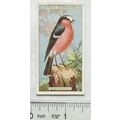Amersham, Buckinghamshire - multiview postcard inc Market Hall, Kings Arms etc
- Condition : Used
- Dispatch : 2 Days
- Brand : None
- ID# : 179584686
- Quantity : 1 item
- Views : 301
- Location : United Kingdom

- Seller : justthebook (+1704)
- Barcode : None
- Start : Sat 13 Apr 2019 10:27:58 (BST)
- Close : Run Until Sold
- Remain : Run Until Sold
More Listings from This Seller view all
Seller's Description
- Postcard
- Picture / Image: Amersham [Buckinghamshire] - multiview: Market Hall / Kings Arms Hotel / from Rectory Woods / Parish Church
- Publisher: Judges (C11791)
- Postally used: no
- Stamp: n/a
- Postmark(s): n/a
- Sent to: n/a
- Notes / condition:
- Postcard
Queen Edith was the wife of Edward the Confessor and sister of king Harold, and after her death in 1075 the land passed to William the Conqueror who granted it to Geoffrey de Mandeville.
In 1200 Geoffrey, Earl of Essex obtained a charter for Amersham allowing him to hold a Friday market and a fair on 7 and 8 September. In 1613 a new charter was granted to Edward, Earl of Bedford, changing the market day to Tuesday and establishing a statute fair on 19 September.[2]
In 1521 seven Lollard dissenters (William Tylsworth, John Scrivener, Thomas Barnard, James Morden, Robert Rave, Thomas Holmes and Joan Norman) were burned at the stake in Amersham. A memorial to them was built in 1931 and is inscribed as follows: "In the shallow of depression at a spot 100 yards left of this monument seven Protestants, six men and one woman were burned to death at the stake. They died for the principles of religious liberty, for the right to read and interpret the Holy Scriptures and to worship God according to their consciences as revealed through God's Holy Word". The Universal Magazine of September 1749 (p 139) quotes that 'William Tylesworth' was in fact burnt in 1506, and that Thomas Bernard and James Morden (a labourer), were burnt about two years later.[3]
Amersham Golf Club (now defunct) was founded in 1897. The club continued until the onset of the First World War.[4]
The area of the town now known as Amersham on the Hill was referred to as Amersham Common until after the arrival of the Metropolitan Railway in 1892. After this date growth of the new area of the town gradually accelerated, with much work being done by the architect John Kennard. It is now known locally as "Amersham-on-the-Hill", "Amersham town" or the "New Town".
In 1931, the architect Amyas Connell completed the Grade II listed art deco house, "High and Over" in Amersham.[5] It has been used as a film location.[6]
Old Amersham is situated on the valley floor of the River Misbourne. This is a chalk stream which dries up periodically. The river occupies a valley much larger than it is possible for a river the size of the present River Misbourne to cut, making it a misfit stream. The valley floor is at around 100m OD, while the valley top is at around 165m OD. It is likely that the valley was formed under conditions akin to those required to form a dry valley. Amersham on the Hill is built on the north side of the Misbourne valley, on a small plateau that forms the watershedbetween the Misbourne and the neighbouring River Chess.
Please ask if you need any other information and I will do the best I can to answer.
------------------------------------------------
Postage and packing charge should be showing for your location (contact if not sure).
UK - PayPal, Cheque (from UK bank) or postal order
I will give a full refund if you are not fully satisfied with the postcard.
----------------------------------------------
Amersham (/ˈæmərʃəm/) is a market town and civil parish within Chiltern district in Buckinghamshire, England, 27 miles (43 km) north west of London, in the Chiltern Hills. It is part of the London commuter belt. Amersham is also 15 miles (24 km) from Aylesbury and 13 miles (21 km) from High Wycombe.
There are two distinct areas: Old Amersham, set in the valley of the River Misbourne, which contains the 13th century parish church of St. Mary's and several old pubs and coaching inns; and Amersham-on-the-Hill, which grew rapidly around the railway station in the early part of the 20th century.
Records date back to pre-Anglo-Saxon times, when it was known as Agmodesham, and by the time that the Domesday Book was written around 1086 it had become known as Elmodesham. The Domesday entry is as follows:
Geoffrey de Mandeville holds Amersham. It answers for 7 1⁄2 hides. Land for 16 ploughs; in lordship 2 hides; 3 ploughs there. 14 villagers with 4 smallholders have 9 ploughs; a further 4 possible. 7 slaves; meadow for 16 ploughs; woodland 400 pigs. The total value is and was £9; before 1066 £16. Queen Edith held this manor.Listing Information
| Listing Type | Gallery Listing |
| Listing ID# | 179584686 |
| Start Time | Sat 13 Apr 2019 10:27:58 (BST) |
| Close Time | Run Until Sold |
| Starting Bid | Fixed Price (no bidding) |
| Item Condition | Used |
| Bids | 0 |
| Views | 301 |
| Dispatch Time | 2 Days |
| Quantity | 1 |
| Location | United Kingdom |
| Auto Extend | No |



 for 1 item(s)
for 1 item(s)

















